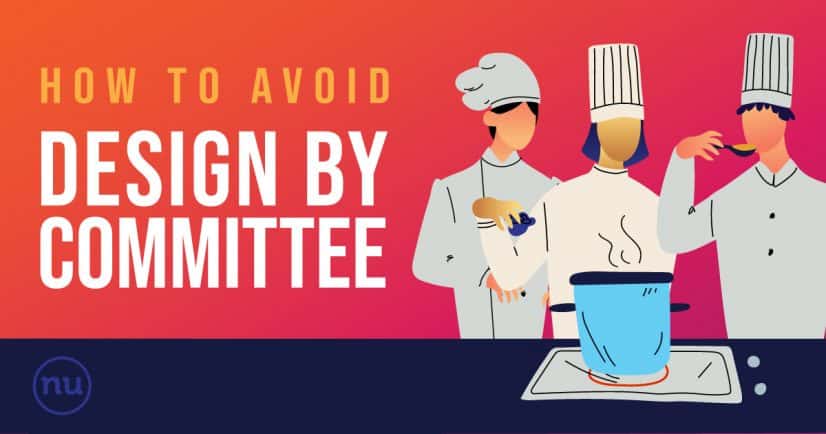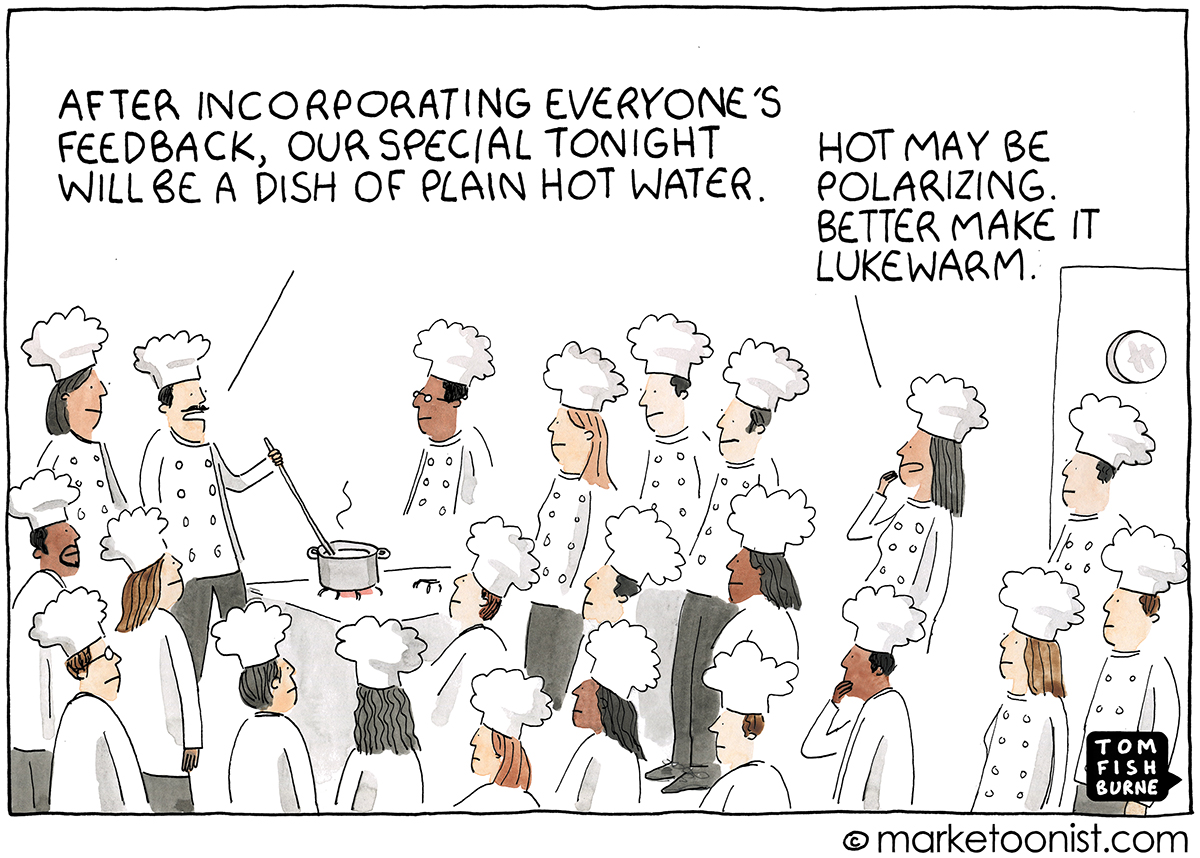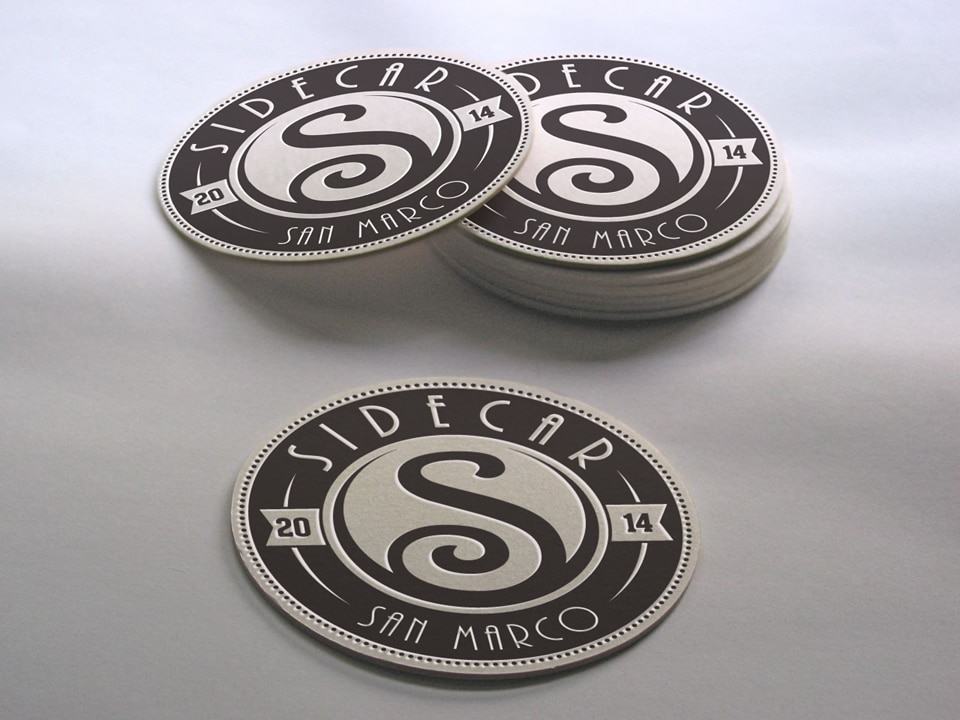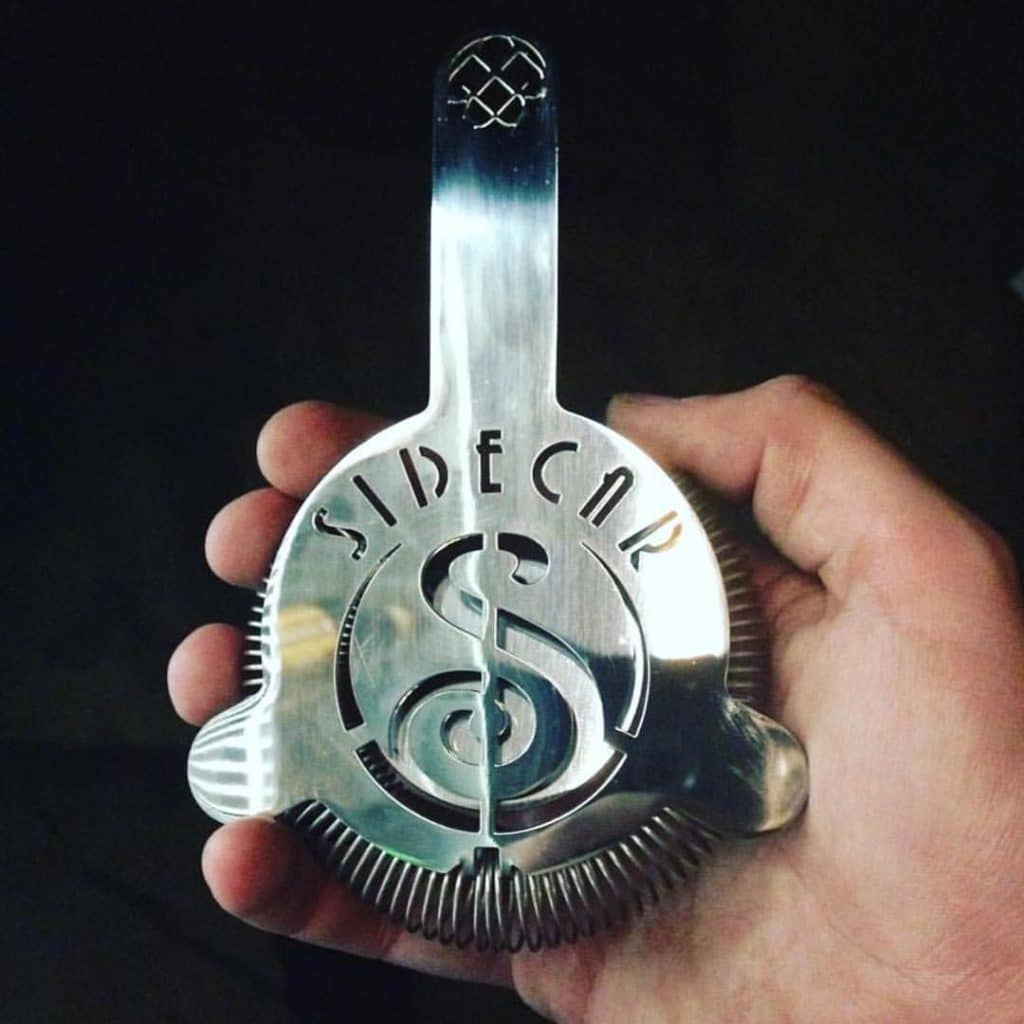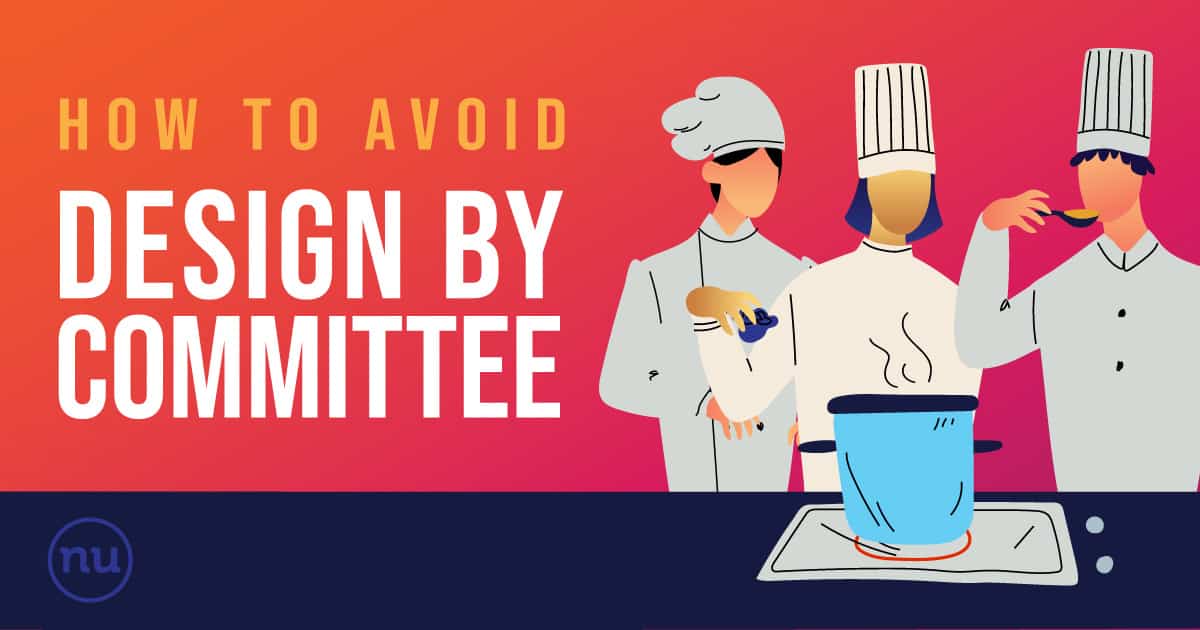
Too many cooks spoil the broth.
Too many coaches, not enough players.
A camel is just a horse designed by committee.
There are so many variants of this age-old problem that you never have to reach far for an idiom. Indeed, it’s a common enough issue that most of us can point to examples in our everyday lives (don’t even get me started about the minestrone fiasco of Thanksgiving 2017). For anyone involved in project-based roles, the challenge of too many viewpoints of a project can be a daily struggle. In addition to potentially undoing hours of thoughtful and creative work, this phenomenon can be paralyzing to the very thing we are all after–good work. This article aims to provide a thorough look at how too many opinions can reduce otherwise good designs to their least common denominator and provide tips on how to avoid design by committee.
Who is this Committee?
The committee can be represented by any group too large or uninformed to efficiently grant consensus or move a project forward. Typically we see this personified in boards of directors, consultation teams, public relations, and creative agencies, or a variety of outside voices. The latter category can be especially damaging to a project because it can consist of friends, family members, coworkers, or interns, who attempt to demonstrate their value by throwing up unqualified challenges to thoughtful work. Even though we’re all very confident Uncle Frank has his finger on the pulse of society, one phenomenon we can set our watch by is that people are always eager to provide an opinion, whether it’s informed or not.
Beyond polluting the review process, the problem does not strictly lie with who makes up this committee but how many people are a part of it. As an agency, one of the first questions we ask when feeling out a project is “who will be our primary (read: sole) point of contact?” The answer to this question educates every downstream decision because it informs us how to approach the situation. An individual decision-maker will usually become a project’s greatest advocate through sound operations, communication, and creative output. On the other hand, a committee represents a group of people who can’t all be 100% satisfied and sometimes provide more obstacles than insights. This impulse is typically rooted in personalities attempting to prove their value within the larger group. In a best-case scenario, this could mean finding a way to respectfully disagree with someone who is just thinking out loud–but at its worst, unqualified opinions can blow up a project entirely, sending both the client and contractor back to square one with little to show for it.
How to Avoid Design by Committee
Measure Expectations Early & Often
Aside from creating proper communication channels, make sure the process of the project is clearly scoped out ahead of the execution of a contract. In other words, make sure it’s clear what is being delivered and when it is set to arrive. If ever there is a question on a deliverable, we only ever need point back to the mutually-agreed-upon document that lays out every critical detail. This process protects everyone when used properly. There is also good value in setting regular check-in dates along the way so clients and contractors can stay in sync.
Encourage Design By Team
Though this concept warrants an article all its own, employing a team mentality is always helpful and can save a project in the instances when designing in a large group is unavoidable. The creative brains at Justinmind remind us that “the people involved in a design project should be pushing towards a common goal, not competing to get their agenda implemented.” From defining roles within the project to agreeing to feedback parameters, it is possible to turn a group of skeptics into partners through clearly defined organization.
Leave No Stone Unturned
Probably the most challenging technique to master is anticipating the worst-case scenario and then preparing for exactly that. We see this kind of structured planning in everything from cosmetic companies to NASA. The way we collectively plan for obstacles is to apply an exhaustive amount of forethought to our own operations. From research to design time and preparing presentation documents, when we apply self-criticism to our own processes, we insulate our projects from these negative outcomes. Put another way: luck favors the prepared.
Balance Through Presentation
One of the mistakes we made as a young agency was assuming that good work speaks for itself. If you’ve ever entertained that notion, let me relieve you of the delusion immediately. Whether you’re a freelance creative or the CEO of a Fortune 500 company, everyone appreciates a guided presentation. A proper presentation allows a more holistic grasp of why certain choices were made and provides a natural opportunity for feedback. This enables everyone to not only enjoy a balanced give and take, but apply context along the way. This is also perhaps the most valuable piece of advice ever dispensed by our agency from a creative perspective.
The Proof is in the Tasting
Just like the ruined broth, the success or failure of a project comes in the form of outside review. If a creative team has performed their due diligence and been provided the necessary breathing room then the project has its greatest chance for success. If an organization has the confidence enough to hire outside help then yielding to the expertise incumbent upon that valuable perspective is more than reasonable. After all, everyone is rooting for the success of a project and should be eager to foster an optimal outcome. We hope these tips help you and your team maintain respectful partnerships and improve the outcome of your creative projects in the future.
About the Author

Grant Nielsen
As our creative director, Grant is responsible not only for the form but also the function of Nuera’s marketing materials and products. He has been a professional designer since 2002 and remains a leading voice in the creative chorus of Northeast Florida.
